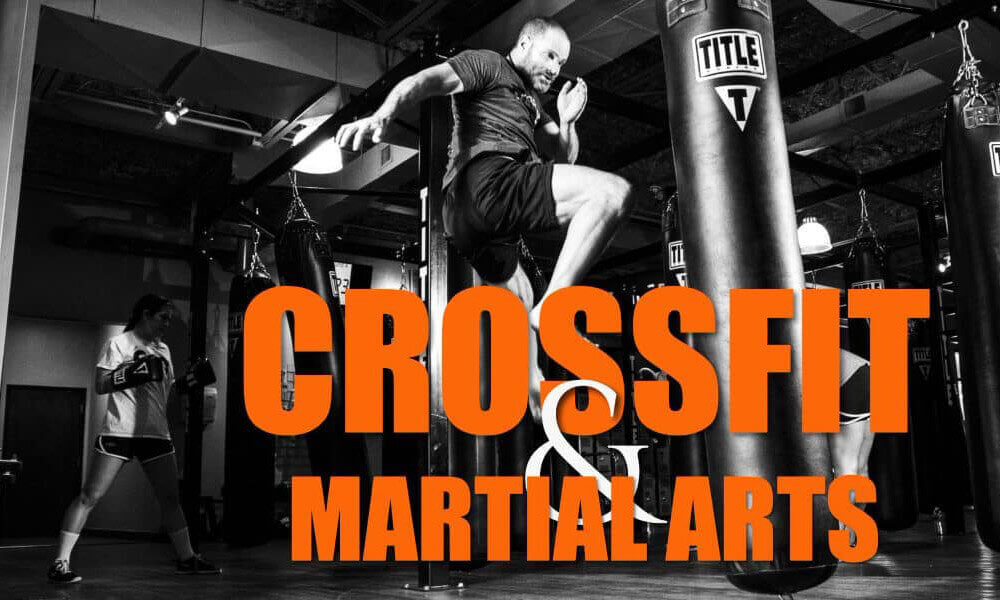No system, including CrossFit, is perfect. Nobody’s claiming it’s the answer to anything. But in martial arts, CrossFit-style training can offer grapplers and strikers a solid workout that complements their traditional training. Cross training helps athletes adapt to different stresses in their chosen sport.
Let’s look at some benefits of CrossFit for martial artists.
1. Focus on Lower Body
Many of us believe the upper body where knockout power comes from. But power generation starts with the legs, moves through to the hips, and finally, to the upper body.Strong legs help athletes run, sprint, and maintain their base. Boxers use their lower legs to deliver powerful punches. Strikers spend long periods of time on their feet.With CrossFit, there’s no forgetting “leg day”. Martial artists might like to avoid heavy squats but CrossFiters love squatting movements. Exercises such as the squat, deadlift, clean, and even wall ball exercises develop powerful, stable legs.
2. Develop Speed
Speed in sport can dictate the outcome of the game.speed is a skill that you can learn and develop.Speed comes from developing the right muscle fiber and by mastering particular movements. The better you get at a movement, the faster you can perform it with correct form. CrossFit doesn’t emphasize speed, per se, but it does place a lot of emphasis on power movements, agility, and flexibility. Improvements in all three areas give athletes a speed boost.
3. Develop A Solid Base
CrossFit helps athletes avoid being swept by building a strong base. Athletes with solid foundations become formidable opponents when passing the guard and or defending takedowns.A powerful base is useless without a solid core. Like a skateboard with a Ferrari engine, there’s lots of force and nothing to control it. At the same time, a strong core does not equal a six-pack. The core is where force is generated and controlled. Your core muscles stabilize your frame. This is vital for martial artists that move in different planes.
4. Remove Muscle Imbalances
CrossFit effectiveness in eliminating unilateral weaknesses comes from the emphasis on single side exercises. Single arm dumbbell snatch movement, reverse single-leg squats, pistol squats, and overhead dumbbell lunges are some of the most common exercises.Great for focusing on the weak side and preventing compensation. In almost every movement that involves both legs or both arms, we use or “stronger” side more than the “weaker” side. In effect, we compound the problem of muscle imbalance with every movement. Unilateral exercises help to iron out this problem.
“Imbalances are the result of training biases” Martial artists are notorious for having overdeveloped hip flexors on one side, or huge shoulder muscles from powerful right hooks. CrossFit didn’t invent single arm or single leg movements but it offers them as part of the workouts.
5. Improved Muscle Endurance
Why is endurance key to a martial artist’s success? Improving the muscle’s engine allows for repeated sustained movements. It’s all about building the body’s lactic threshold. CrossFit WODs are all about fighting off the pain from the lactic acid that floods the body. CrossFit training can help your muscles perform at a high level in a fight for long periods of time. CrossFit workouts hit multiple muscle groups in sections. So when your quads get tired it’s time to change to the pull-up bar, then over to a shoulder press movement.
6. Improved Cardiovascular Engine
Cardiovascular fitness is vital to a martial artist’s capabilities. VO2 max, a standard for measuring an athlete’s aerobic capacity, is the maximum amount of oxygen an individual uses during an activity involving incremental increases of intensity. CrossFit athletes post VO2 max levels of up to 80 ml/kg/min. Considering that top cyclists are also in that range, CrossFiters are no slouches. High-intensity interval training, a huge component of CrossFit, can seriously improve your cardiovascular endurance.
7. Improvements In Neuromuscular Control
Why do athletes get injured? Among the most common reasons for injuries is poor neuromuscular control, the body’s ability to respond automatically to changes in joint stability. Poor control in this area can mean poor response to joint movements that lead to injury if not corrected.
Two areas of focus for improving neuromuscular control are balance training and dynamic movements. CrossFit is big on static and balance movements such as the handstand walk, overhead dumbbell lunge, snatch, and pistol. These exercises challenge the body in ways that typical gym workouts and even martial arts workouts do not. The benefits are the improved automatic-response control over joints and the decreased risk of injury.
8. Doesn’t Require A Lot Of Time
In under one hour, a martial artist can already get the results he or she needs from a solid, well-planned CrossFit workout. That’s one beauty of the training program. The strength, gymnastics, and high-intensity cardio sections of an hour-long class hit all the bases.
The goal of CrossFit is to develop a body that is functional and adaptive to different situations. Originally designed for firefighters and law enforcers, CrossFit is a great addition to the training regime of martial artists. Regardless of the discipline, fighters need to read and adapt to their opponent’s movements. With functional exercises that develop strength, endurance, flexibility, and explosiveness, CrossFit equips martial artists with the ability to move and physicality to get the job done.

